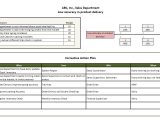
The importance of Resource Allocation and Resource Leveling In Project Management
22 December 2019Table of Contents
The importance of Resource Allocation and Resource Leveling In Project Management
What Is Resource Allocation?
Resource allocation is to assign the needed resources for all construction activities in the required amount and timing.
Work performed on construction requires the utilization of labor, equipment, and materials resources. Shortages in the availability or quantity of any essential resources can affect the performance and project finish date. Therefore, the resource requirements for each activity should be evaluated before a time schedule is put into action. By allocating the labor, equipment, and materials required to perform each individual task on the time schedule, one is able to pre-plan the anticipated resource needs for each workday of the project before the time schedule is put into action.
This total resource requirement is then compared with the quantity on-hand. If the supply on-hand exceeds the requirement, then the time schedule can be worked as planned. If it is found that the demand exceeds supply, then steps need to be taken to ensure that the proper amount of resource will be on hand on the date needed. It should be noted that the Resource Allocation process only determines whether or not there is a problem when comparing resource demand and supply. It won’t state the course of action needed to correct the problem.
What is Resource Leveling?
Resource leveling is a project management technique in which the project start date and end date are adjusted based on resource constraints with the goal of balancing the demand for resources with the available supply.
When performing construction project planning activities, the project manager will attempt to schedule certain activities simultaneously. When more resources such as people or machines are needed than are available, or perhaps a specific person is needed in both activities, the activities will have to be re-scheduled in a concurrent way or even sequentially to manage the constraint.
Project resource leveling is the process of resolving these conflicts. It can be used to make a balance for the workload of primary resources over the course of the projects, usually at the expense of one of the traditional triple constraints (time, cost, scope). When using specially designed project time schedule software like Primavera P6, leveling typically means resolving conflicts of over allocations in the construction project plan by allowing the software (Primavera P6) to calculate delays and update activities automatically.
Project management software (Primavera P6 or Ms Project) leveling requires delaying activities until resources are available. In a more complex organization, resources could be allocated across multiple, concurrent construction projects thus requiring the process of resource leveling to be performed at the firm level. Resource leveling techniques are closely related critical path method calculations. For that reason, total float, activity sequences, and the network diagram logic affect the required resource quantities per time.
Resource leveling Techniques
The critical path is a common type of technique used by project managers when it comes to resource leveling. The critical path represents for both the longest and shortest time duration paths in the network diagram to finish the project. However, apart from the widely used; critical path method concept, project managers use fast-tracking and crashing if things get out of hand.
Fast tracking:
Fast tracking shortens the schedule by overlapping activities that are normally done in parallel. One way of doing this is changing the network logic by using leads and lags. For example, you can change a finish-to-start relationship to a finish-to-start with a lead.
This causes the successor activity to start before the predecessor is complete. You can also change it to a start-to-start or finish-to-finish with a lag. This performs critical path activities. This buys time. The prominent feature of this technique is that although the work is finished for the moment, the possibility of rework is higher.
Crashing:
Crashing looks for cost/schedule trade-offs. In other words, you look for
ways to shorten the schedule by applying more resources or by spending more. The intent is to get the most schedule compression for the least
amount of money. Some common ways of accomplishing this include
Bringing in more resources: Sometimes, more people working, or using
additional equipment, can speed up progress.
Be careful. Sometimes adding resources actually extends the duration because coordination, communication, and conflict actually take more time than they save!
Working overtime: Many times, you can work longer hours or work weekends. However, this is useful only for a couple of weeks. After that, people burn out and are less productive, so this is but a short-term fix.
You also have to take into consideration any union or labor regulations.
Paying to expedite deliverables: This can include overnight shipping and paying bonuses to contractors for early delivery.
You could crash some activities for the childcare center example. For example, you can bring in an extra carpenter, electrician, plumber, HVAC person, or painter and reduce the duration. You can also ask those resources to work more hours (depending on any labor union restrictions).
Bringing in more resources might even reduce the time without increasing cost because the extra resources will shorten the duration. Overtime is usually billed at time and a half, so that option may cost more.
To download more project management resources please visit www.managementproject.net








